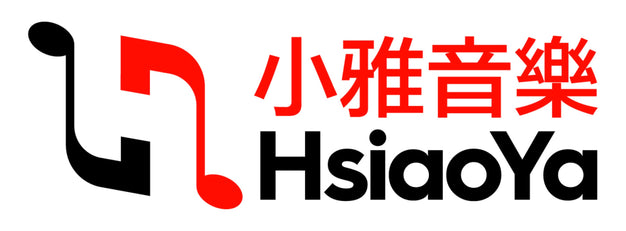
Graffiti 陳銀淑 總譜 博浩版
我們大多數人在面對 "塗鴉 "一詞時,很可能會將其與遍佈城市景觀的荒涼牆壁塗鴉聯繫起來。然而,這並不是塗鴉的全部:克利、米羅、杜布菲和畢卡索等藝術家都對塗鴉感興趣(畢卡索曾親自在巴黎的牆上作畫)。在我們這個時代,街頭藝術是一個非常有趣且極具爭議的現象,它偶爾會詼諧地批評城市的商業化。街頭藝術家們的最佳表現是挫敗了無處不在的大眾媒體和廣告所造成的期望--在柏林、巴黎或紐約等大都市,我們可以找到一些特別突出的例子。雖然這是塗鴉最初的刺激因素,但它最終還是轉向了相當不同的方向:它與街頭藝術現象(或視覺藝術)的聯繫即使有,也是非常鬆散的。音樂既不是說明性的,也不是程式化的,其主要思想是創作一首不受時間和地點限制的音樂,並在不同的表達方式之間形成強烈的對比。第一樂章 "Palimpsest "是多維的、多層次的,可以聽到多種風格的典故。 第二樂章 "Notturno urbano "與前一樂章的亢奮形成強烈對比。樂章以悠遠而逐漸接近的鐘聲開始,整個樂章的音樂素材都來自鐘聲。樂器的使用往往不落俗套:管樂和絃樂都採用了擴展技巧,這使得樂章更加冷峻和神秘。 第三樂章技巧性極強,是一種 "城市通奏曲"(這種音樂形式的名稱實際上源自西班牙語 "pasar una calle",即 "沿著街道行走")。它由八個精闢的和絃組成,由銅管樂器連續演奏,儘管總是以不同的方式演奏。在這一樂章中,兩個世界發生了碰撞:銅管樂的攻擊被不同樂器的飛快插奏所注解,這些插奏在性質和長度上變化多端。整體而言,《塗鴉》的音樂語言在粗獷與細膩、複雜與透明之間轉換,對比強烈,曲折迷離,既非調性,也非無調性。塗鴉》要求音樂傢俱有極高的敏捷性、精湛的技藝和不斷變化的視角;每件樂器都被視為獨奏家。《塗鴉》由洛杉磯愛樂協會、倫敦巴比肯藝術中心、金澤管弦樂團、德國北威州藝術基金會和 Ensemble musikFabrik 委託創作。 它於 2013 年 2 月 26 日由古斯塔沃-杜達梅爾指揮的洛杉磯愛樂樂團新音樂小組首演"
作曲家: Chin, Unsuk
樂器: large ensemble
出版社: Boosey & Hawkes
原文簡介:
Most of us, when confronted with the term “graffiti,” are likely to associate it with the rather desolate wall scrawlings all over our urban landscapes. However, this is not the whole picture: no less artists than Klee, Miró, Dubuffet, and Picasso were interested in it (the latter painting examples himself on Parisian walls). In our time, there is the highly interesting and controversial phenomenon of Street Art, which has occasionally wittily succeeded in criticizing the commercialization of cities. At their best, street artists have been able to thwart the expectations created by omnipresent mass media and by advertising – one can find some particularly remarkable examples in metropolises such as Berlin, Paris, or New York.Though this was the initial stimulus for Graffiti, it finally branched into rather different directions: it is only very loosely, if at all, connected to the phenomenon of Street Art (or to the visual arts). The music is not illustrative nor is it programmatic and the main idea was to compose a music which is not restricted as to time or place, and which offers strong contrasts between different modes of expression.The three movements’ headings give a hint of the changing modes, moods, and structures of the music. The first movement, Palimpsest, is polydimensional and many-layered; one can hear allusions to a multiplicity of styles. The second movement, Notturno urbano, forms a strong contrast to the hyperactive previous movement. It starts with distant and gradually approaching bell-like sounds, from which the whole movement’s musical material is being derived. The instruments are often used in an unconventional way: the winds as well as the strings employ extended techniques, which contributes to the aloofness and the mysteriousness of the movement. The third, highly virtuosic, movement, is a kind of an 'urban passacaglia' (the name of this musical form actually derives from the Spanish 'pasar una calle', 'to walk along a street'). It consists of eight incisive chords, which are played continuously by the brass, albeit always in a different way. Two worlds collide in this movement: the brass attacks are commented upon by flitting interjections of different instruments, which are highly varied in character and length.As a whole, the musical language of Graffiti shifts between roughness and refinement, complexity and transparency. It is rich in contrast and labyrinthine, neither tonal nor atonal. Graffiti calls for great agility, virtuosity, and constant changes of perspective from the musicians; each instrument is being treated as a soloist.Graffiti was commissioned by the Los Angeles Philharmonic Association, Barbican, London; Orchestra Ensemble Kanazawa, Kunststiftung NRW and Ensemble musikFabrik. It was first performed on 26th of February 2013 by the Los Angeles Philharmonic New Music Group conducted by Gustavo Dudamel.
